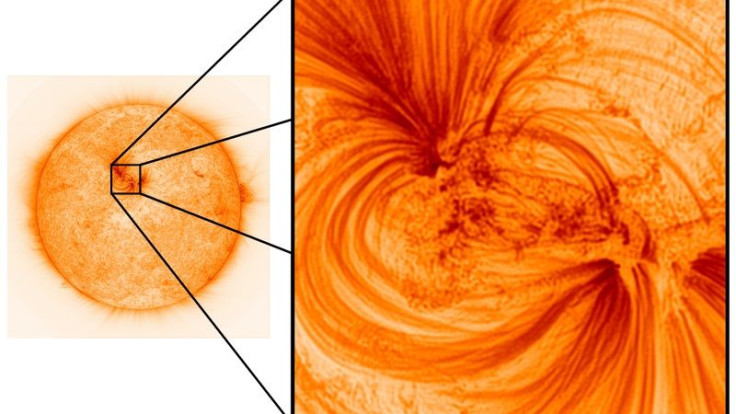New Highest Resolution Image Of Sun Reveal 500-Kilometer-Wide Plasma Strands
KEY POINTS
- NASA's telescope captured new high-resolution images of the Sun
- The images focused on the Sun's corona
- The images revealed the Sun's massive plasma strands
NASA’s space-based telescope was able to capture the highest resolution images of the Sun. It was able to reveal the previously undetected strands of plasma in the Sun’s atmosphere.
The images were collected and studied by a team of scientists from the University of Central Lancashire (UCLan using NASA’s High-Resolution Coronal Imager (Hi-C). Their findings were presented in a new study published in the Astrophysical Journal.
The Hi-C was launched by NASA in 2018 with the objective of taking high-resolution images of the Sun’s atmosphere, which is known as the corona. Through these images, scientists are able to study various characteristics of the Sun and emissions from its atmosphere.
Recently, NASA’s Hi-C was able to take close-up photos of the corona, which revealed the various features of its surface. These include the strands of plasma in the corona. When viewed from afar, these strands appear as fine threads of extremely hot plasma.
But through Hi-C, scientists at UCLan were able to peer into the massive plasma strands, which measure about 500 kilometers wide. Flowing within these strands are hot electrified gases.
According to Robert Walsh, a solar physics professor at UCLan, the photos captured by the Hi-C are currently the highest resolution images of the Sun. Through these detailed images, scientists will be able to observe the Sun and its activities in incredible detail.
“Until now solar astronomers have effectively been viewing our closest star in 'standard definition', whereas the exceptional quality of the data provided by the Hi-C telescope allows us to survey a patch of the Sun in 'ultra-high definition' for the first time,” he stated.
Although the exact mechanisms that form the plasma strands remain unclear, the scientists believe the new images can be used to study the nature of the Sun’s corona.
Together with data collected by NASA’s other solar missions, images taken by Hi-C can provide valuable information regarding the behavior of the Sun and how energy flows through its atmosphere.
“These new Hi-C images give us a remarkable insight into the Sun's atmosphere,” Amy Winebarger, the principal investigator for Hi-C said in a statement. “Along with ongoing missions such as Probe and SolO, this fleet of space-based instruments in the near future will reveal the Sun's dynamic outer layer in a completely new light.”

© Copyright IBTimes 2024. All rights reserved.





















